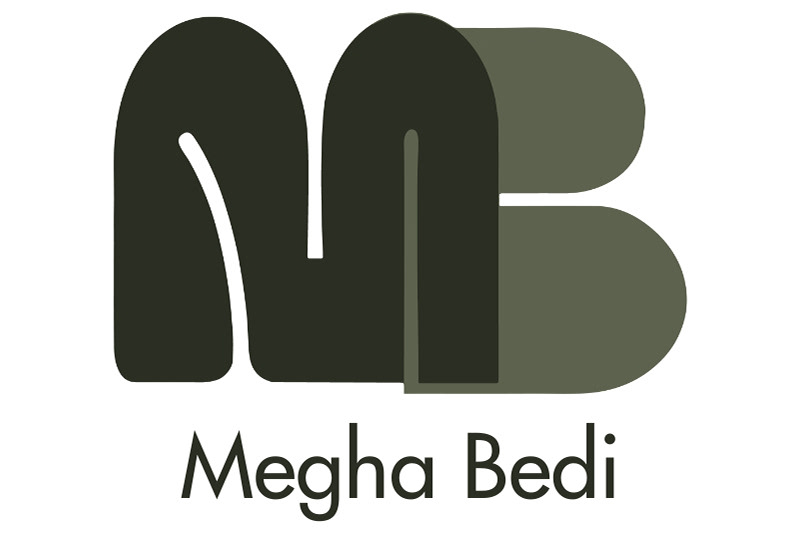MAHAR
A collection of coffee tables designed with a recycled oyster shell tabletop and mild steel base, working with the Suawadi Pearls farm to minimize the waste of oyster shells in the UAE.
The statistics surrounding the waste generated from oyster shells show a critical environmental issue. Every year, millions of tons of oyster shells are discarded, contributing significantly to landfill loads. This waste not only represents a lost opportunity for resource utilization but also poses environmental challenges, as the slow decomposition of shells in landfills can lead to long-lasting ecological impacts.
These facts prompted me to conduct primary and secondary research investigating the waste and repurposing of oyster shells. This allowed me to conclude findings from both sources to inform strategic and environmentally responsible approaches to address oyster shell waste.
A material swatch made using cement, crushed recycled oyster shells and an adhesive.
Over 50,000 oyster shells are thrown and sent to landfills each month in the UAE.
Research
Conducted an immersive on-site visit to Suwaidi Pearls - a Pearl Farm in Al Rams, UAE. With the specific objective of gathering firsthand data on the waste management of oyster shells. During the visit, I engaged in the collection of samples to assess the quantity and characteristics of discarded oyster shells. I documented the entire process lifecycle, from oyster breeding and cultivation to the harvesting phase, gaining valuable insights into the various stages leading up to disposal.
Images taken at a tour at Suwaidi Pearls, Al Rams, UAE.
This firsthand experience provided a unique perspective on the challenges and opportunities associated with oyster shell waste. The data collected during the visit serves as a foundation for informed research and analysis, contributing to the development of sustainable solutions for the responsible management and repurposing of oyster shells within the context of Suwaidi Pearls, Pearl Farm.
After conducting research on the existing solutions to repurposing oyster shells, I found that existing products predominantly span the spectrum from DIY items to applications in the food and beverage industry, the potential for incorporating oyster shells into functional and aesthetically pleasing furniture remains largely untapped.
This identified gap in the market to innovate products with a function and explore innovative and sustainable avenues within the design and furniture industry.
Source: Bhowmick, Ankita (2019, Jan 10). Design & Architecture. Luxhabitat.com https://www.luxhabitat.ae/the-journal/the-best-places-to-get-luxury-furniture-in-dubai/
Following this, to identify the gap in the market for oyster shell-based furniture, I undertook an in-depth exploration of luxury furniture brands in the region. By delving into the world of luxury furniture, I gained insights into the materials and design aesthetics that distinguish these brands.
Building on this research, I further enriched my understanding of the target audience by creating a user mood board. This tool was important in capturing the essence of consumer preferences, allowing for a visual representation of design elements, color schemes, and lifestyle aspirations that resonate with the luxury furniture clientele.
Design Process
The design process began with the generation of conceptual sketches, capturing a variety of forms and ideas. These initial sketches showcase design elements that can seamlessly integrate the unique qualities of oyster shells into functional and aesthetics. Upon finalizing the concepts, iterating CAD prototypes began.
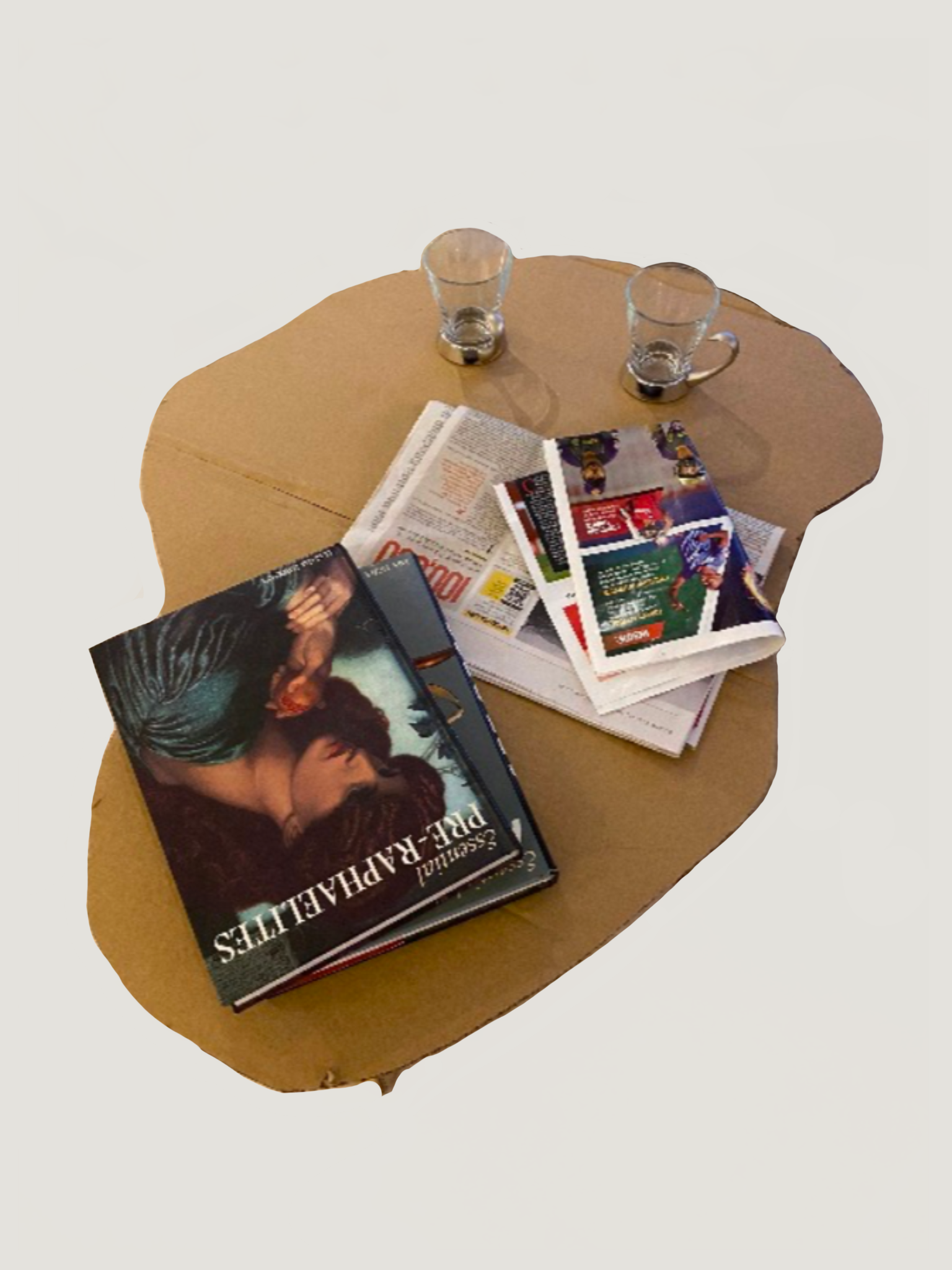
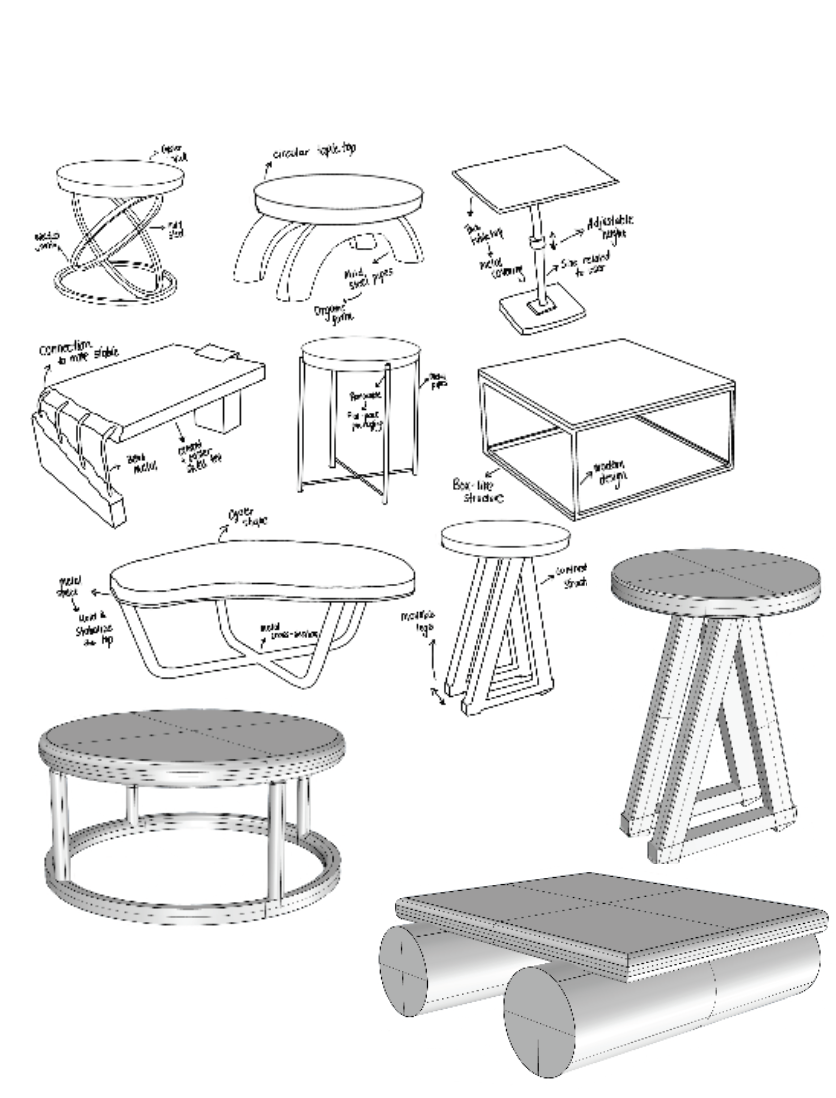
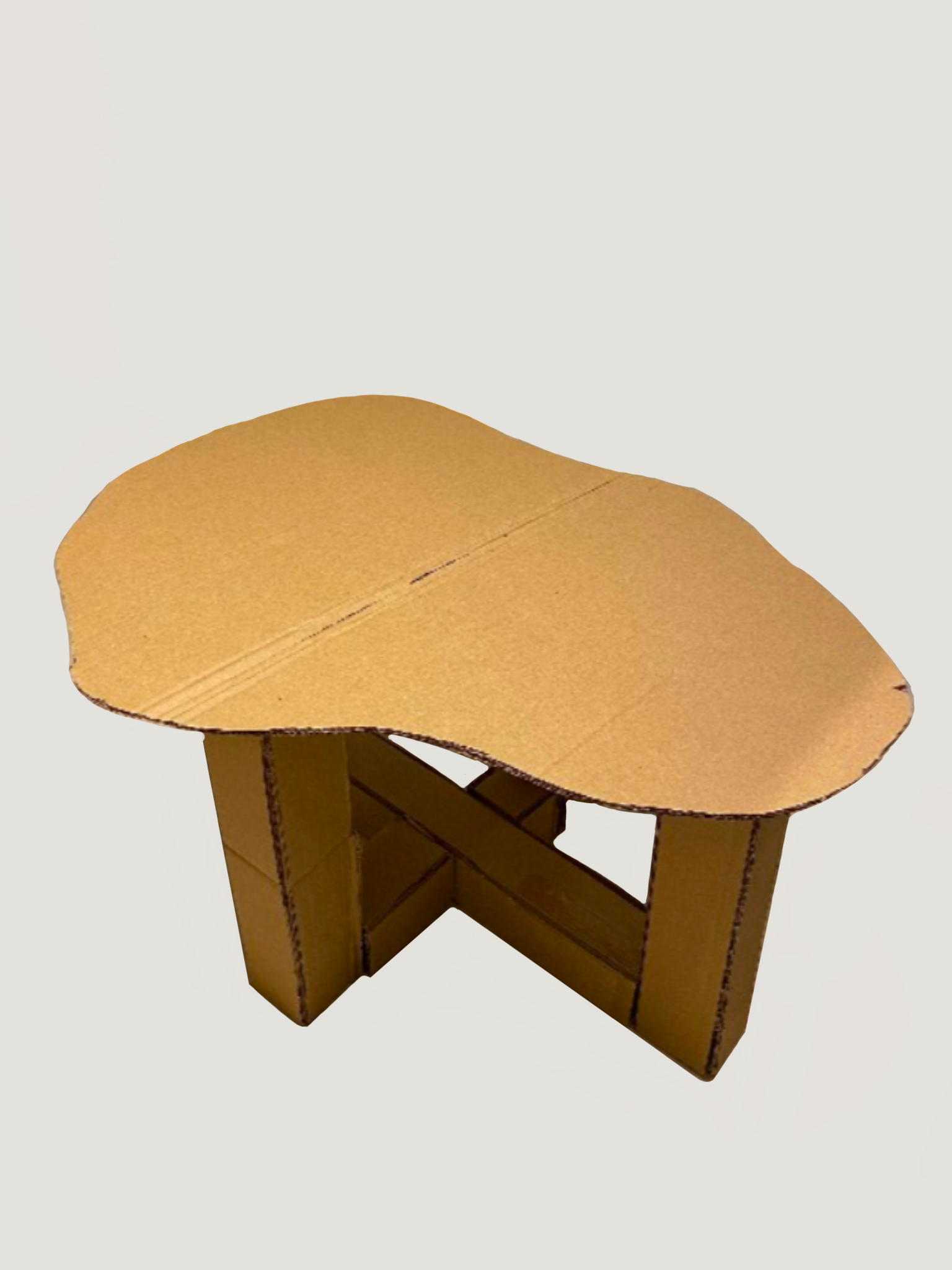
This process facilitated a deeper exploration of details, materials, and dimensions. These tangible prototypes serve tools to understand the size, scale, and proportions of the product in a three-dimensional context. This iterative design journey, from initial sketches to digital prototypes and physical mock-ups, ensured a thoughtful development process.
Cross section sample made of mild steel.
Testing the thickness and strength of the base.
The tabletop shape is Inspired by the Golden Ratio - the concept of creating balance through natural forms and organic structures; mimicking the properties of an oyster shell.
The tabletop is crafted by blending crushed oyster shells with cement, yielding to create a robust material for durability. To ensure stability and safety, a layer of resin is applied, securing the oyster shells in place and concealing any sharp edges. This process creates an aesthetic yet functional piece of furniture, with harmony of natural elements and modern features.
Customization
This product is offered in customization options, allowing the user to tailor the piece to their unique style and preferences. The brush-painted mild steel base is available in six distinct colors, providing a spectrum of choices for personalization. This versatility ensures that the table seamlessly fits into a multitude of interior designs, from contemporary to rustic.
The base color selection can be balanced with the three oyster tabletop colors, which are dyed using natural pigments in shades of grey. This cohesive customization approach empowers the user to create a cohesive and personalized aesthetic, reflection individual taste and enhancing the ambiance of any space.
Final Product
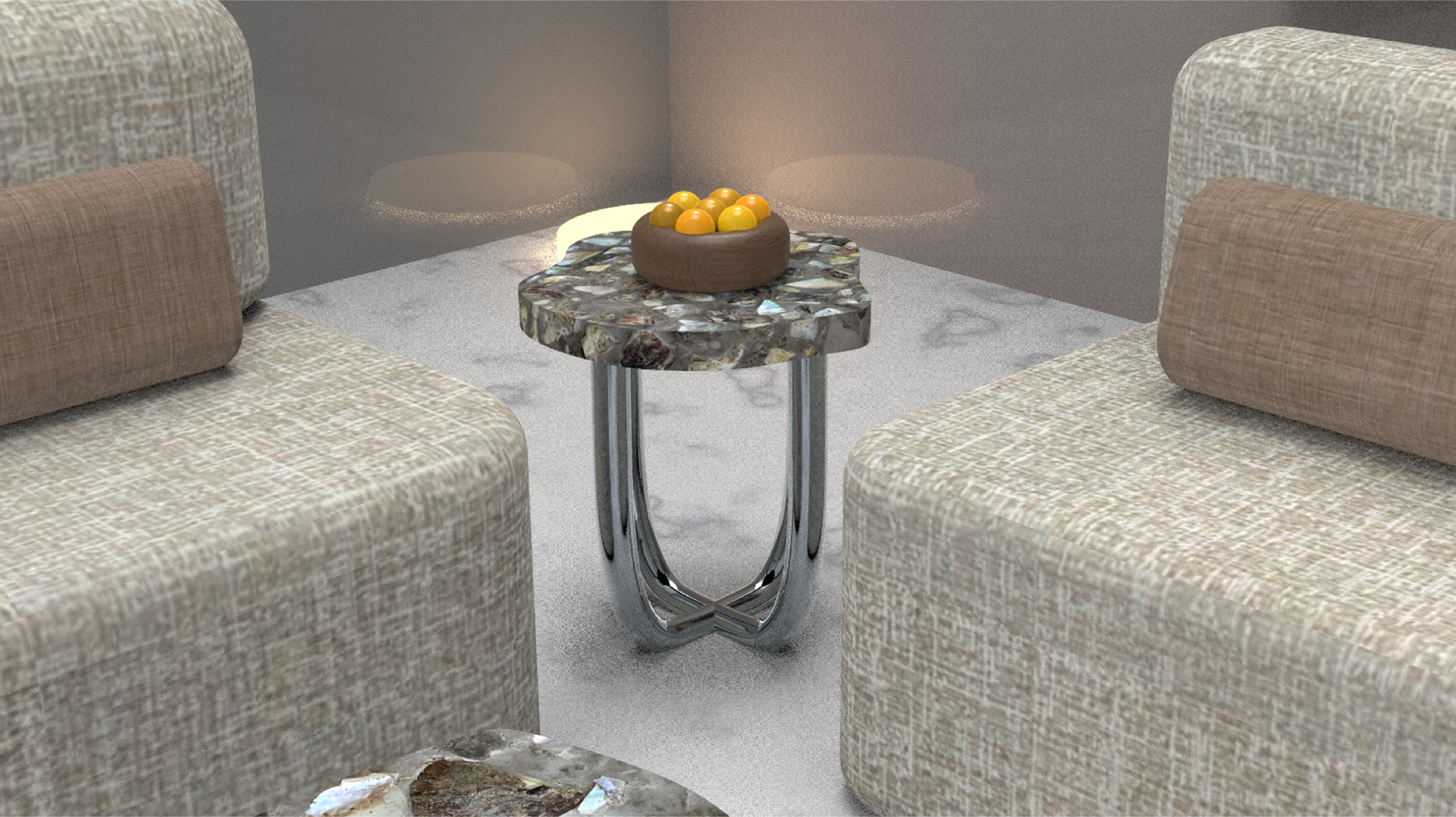
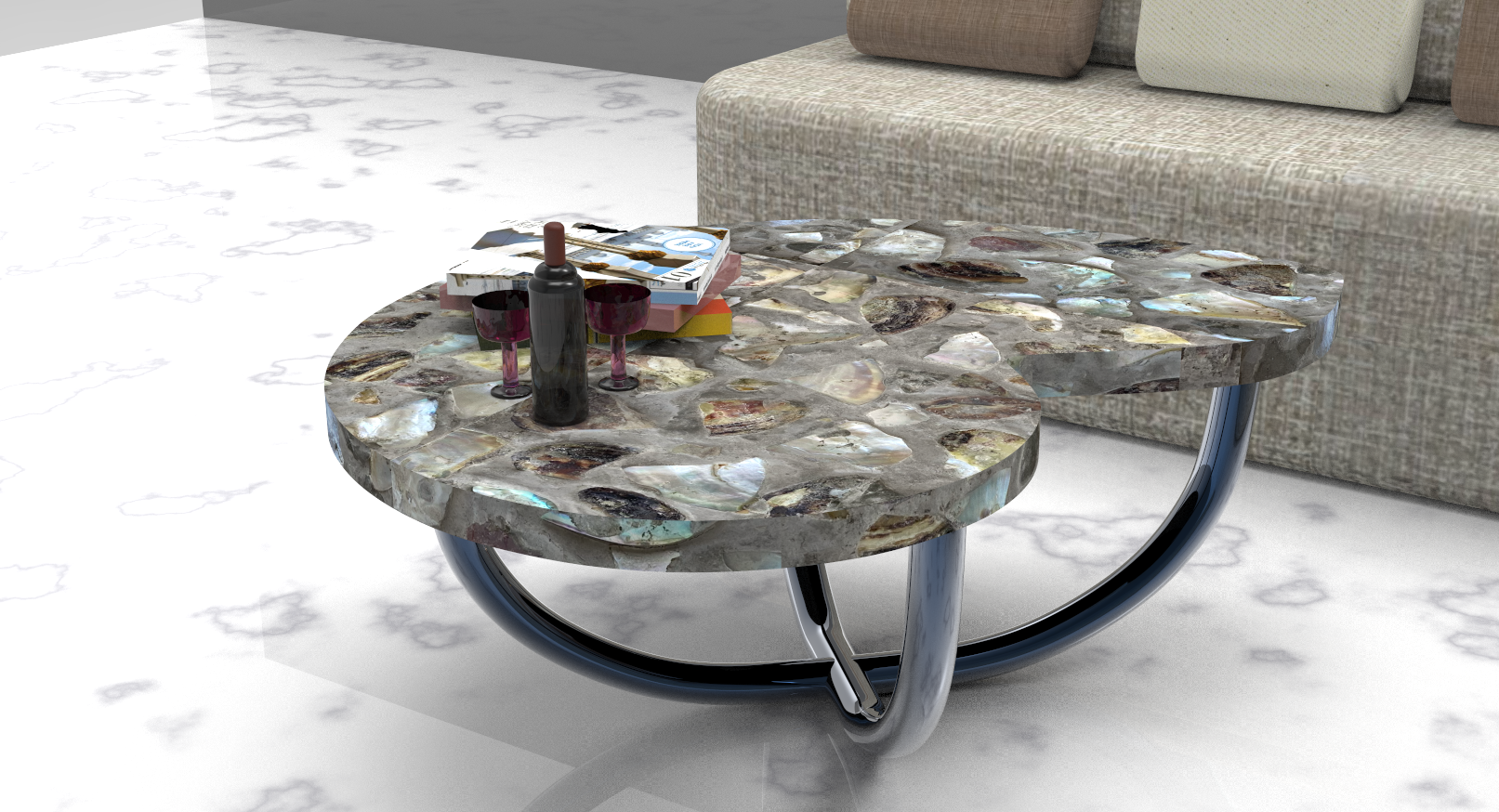
Tools
Rhino3D
Keyshot
Photoshop
Rhino3D
Keyshot
Photoshop
